
#(Re)tweetingforfuture: How Greta Thunberg leads the climate crisis conversation on Twitter
In discussions and reports about the climate crisis, the appearance of the name Greta Thunberg is inevitable. The 16-year-old Swedish climate activist first started her Skolstrejk för Klimatet (school strike for the climate) in August 2018 at the Swedish parliament in Stockholm. She has been striking every Friday since, gathering a global following of fellow Friday-strikers. With these strikes, Thunberg demands that the Swedish government and other world leaders face and believe scientific facts, act upon the climate crisis, and shut down the biggest emitters of CO2. However, the strikes are also a major part of her personal climate crisis narrative. In disseminating this narrative she uses Twitter, other digital platforms, and hashtags such as #climatestrike and #fridaysforfuture to connect large numbers of like-minded people and institutions in constructing a climate activist movement with a united voice and unified objective.
This article uses long-term data collection of Thunberg’s Twitter activity to determine the climate change discourse presented by the activist and pinpoint how Greta Thunberg uses the affordances of tweeting to frame the climate crisis and to construct a global action-based conversation.
Tweeting 101
As a Twitter user, Thunberg engages with the multitude of the social medium’s affordances. The real-time micro-blogging platform enables users to directly send 280-character messages out to their followers and the rest of the world through tweets that have multimodal properties and can simultaneously include text, images, hyperlinks and videos. Tweeting only 1-2 times a day on average, and primarily sharing climate-related content, Thunberg mainly relies on retweets, or the posting of a tweet that has already been published, to further her discourse (Burghardt, 2015). Through such retweets Thunberg can join a conversation, bring her followers into a conversation with the initial tweeter, publicly agree with or validate others, or amplify or spread tweets to new audiences (Bucher & Helmond, 2018).
A third type of tweet is retweets with comments. These are more interactive, as they allow the retweeter to add comments or additional information to the initial tweet before re-posting it to their own timeline. The initial tweet can then provide clarity, be a conversation-starter, or be the basis for quoted content from other channels without origin-tweets (Bucher & Helmond, 2018; Boyd, Golder & Lotan, 2010). Within an analytical frame both types of retweeting, as well as the direct action of liking a tweet, are forms of intertextuality, as content is borrowed and re-used. In the case of Thunberg the intertextuality is rather explicit as all the content she shares exists within the context of climate discourse.
Such intertextual links are created through recontextualization, or the process of mobilizing semiotic resources that are ''socially significant and culturally valuable to the immediate participants and groups involved,'' such as textual forms, patterns, and cultural discourses, which intertwine and make up the language of social media (Leppänen et al., 2013, p. 3). Recontextualization is part of the ''re-use of language and textual material as resources in meaning making,'' which involves entextualization, or the process of integrating and modifying out-of-context discourse material so that it fits in a new context (Leppänen et al., 2013, p. 7). In the case of Thunberg, she incorporates and relocates the cultural element of others' tweets in the context of her own timeline and discourse, giving them new meanings in the process.
The Twitter actions of users replying to, commenting on, or tagging Thunberg in their own tweets are not broadly included in this analysis as they appeared in volume. Thus, this article will discuss a selection of the data that best represents Thunberg’s discourse and therefore only includes data that has been produced, retweeted, or liked by Greta Thunberg herself.
Climate crisis á la Thunberg
Thunberg frames the changing climate and the effects caused by it as a serious issue that has impacted humanity and will continue to fatally affect current and future generations. The climate change discourse expressed on her Twitter is persistent in the sense that the activist maintains a consistent and strong viewpoint towards the issue throughout all novel and shared content.
Thunberg frequently writes tweets that emphasize the urgency of the problem, re-using phrases such as ''Climate crisis is greatest ever threat to human rights the United Nation warns'' (@GretaThunberg), or ''The climate and ecological crisis is a global crisis – the biggest crisis humanity has ever faced'' (@NBCNews), which is a quote from one of the speeches she gave in New York at the 2019 United Nations Climate Summit. Thunberg’s retweet of a message by climate change group 350 dot org uses similar language: ''the impacts of the climate change are very real for the young people of the Pacific',' additionally identifying 'the young people’ as being currently and most heavily affected. Even more explicit is a shared quote of her UN Climate Summit speech: ''We are in the beginning of a mass extinction.'' Thunberg mainly retweets content from other tweeters, even though they may be quoting her directly. With this she potentially engages in so-called 'ego retweeting' as she is retweeting messages that refer to herself, which could be seen either as narcissistic or appreciative of those who share Thunberg's discourse (Merry, 2014).
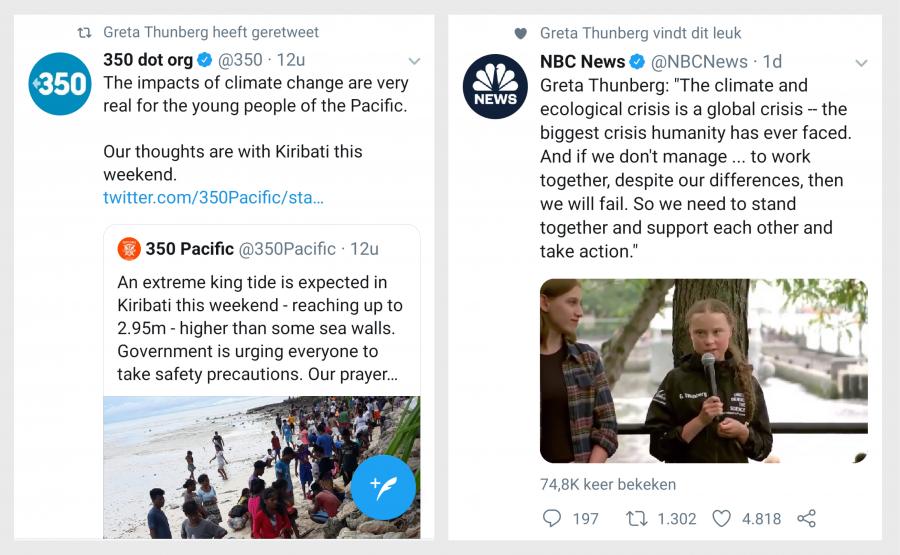
Image 1: Retweet by @GretaThunberg of @350 - Image 2: Like by @GretaThunberg of @NBCNews
#UniteBehindTheScience
''Don’t listen to me. Listen to the science'' is one of Thunberg's expressions that clearly illustrates first her belief in the actuality and realness of climate change, and second that the climate change discourse she promotes is based on scientifically proven facts and figures that go beyond her own personal opinions. By occasionally referring to users who share scientific data and evidence on Twitter, released by significant institutions such as the UN’s Independent Intergovernmental Panel on Climate Change and the Committee on Climate Change UK, she points to science as the primary source that provides proof of the need for change.
Commenting on the tweets that include scientific data, Thunberg expresses how alarming it is that humans are behind on acknowledging and accepting the existing climate science and how such data should be shared publicly to get people out of the climate-denial bubble. Recontextualization occurs through Thunberg's comments, for example in an interaction with user @rgatess, who identifies himself as a 'science advocate'. Thunberg frames his original tweet, which includes a graph on atmospheric methane, by highlighting the point that the figures in question do not make the headlines. She thus adds a further layer to the message: a plea to make such figures more visible in the media.
Further emphasizing the value she attaches to science and her dislike of climate-deniers, she retweeted a quote from herself saying ''I don’t want to meet with people who don’t accept the science'' (@NPR), attempting to make the climate change discussion more reliant on science and facts.
Sharing such data indicates a trust in science which Thunberg herself is consequently endorsed for. For example Alexandria Ocasio-Cortez, an American politician who co-sponsored the pro-climate Green New Deal, commented in support of Thunberg, saying ''...the truth is on your side'' (@AOC). This message consequentially expanded the conversation, as the politically flavoured tweet was publicly shared with Ocasio-Cortez's followers. Although she does not personally discuss science often, Thunberg uses #Unitebehindthescience to emphasize how science is the truth and that those who support her should believe in it. The use of such a hashtag makes tweets findable on the web, thus making scientific facts more accessible (Boyd, Golder & Lotan, 2010). Additionally, hashtags, as an affordance of Twitter, allow users to become part of a specific conversation with others who adopt the same keyword, and provide increased visibility.
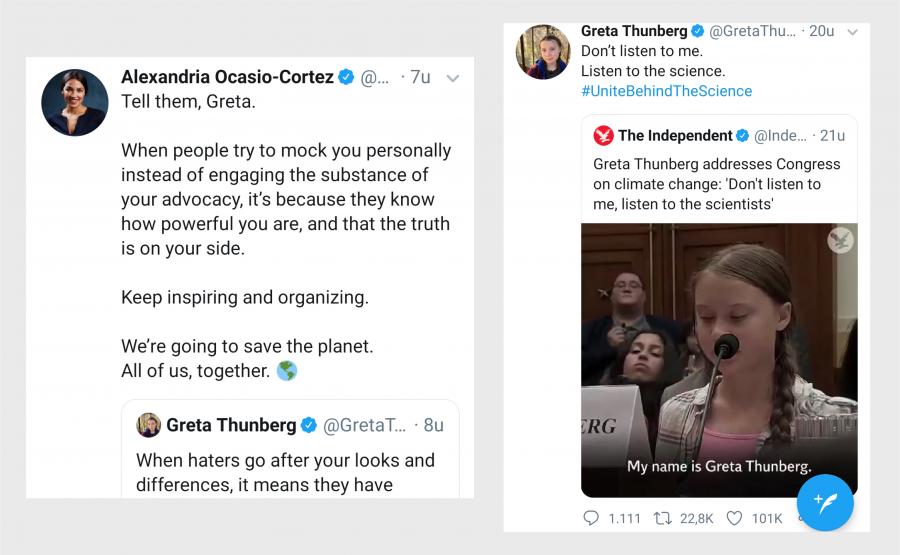
Image 3: Tweet by @AOC - Image 4: Tweet by @GretaThunberg quoting Greta Thunberg and using #UniteBehindTheScience
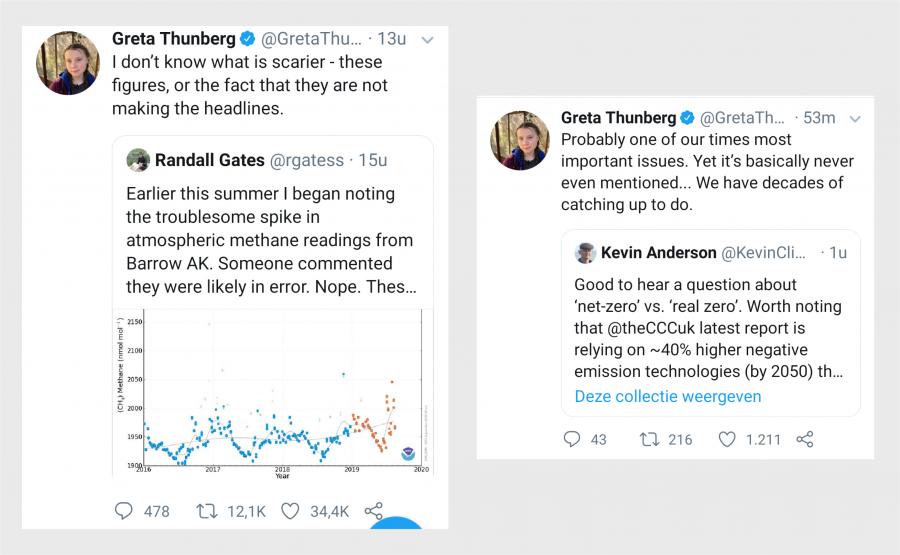
Image 5: Tweet by @GretaThunberg sharing data by @rgatess - Image 6: @GretaThunberg sharing data by @theCCCuk
The culprits: authorities and adults
A vital part of Thunberg’s frame are the culprits, the ones guilty causing or contributing to climate change. Mainly relying on retweets, Thunberg endorses content directed to or mentioning various parties and their current objectives that are part of the problem. For example, ''Adults [should] help fix the problems older generations have created'' (@HollyWildChild), ''Students are demanding climate change from the authorities'' (@Fridays4FutureP), ''If only [the big banks] were this enthusiastic about divesting from the fossil fuel companies causing the climate crisis'' (@350Australia), ''Today’s leaders are making decisions for our environment that our kids will have to live with'' (@NYCMayor) and ''The people who profit off of fossil fuel [are] mad'' (@AlexandriaV2005).
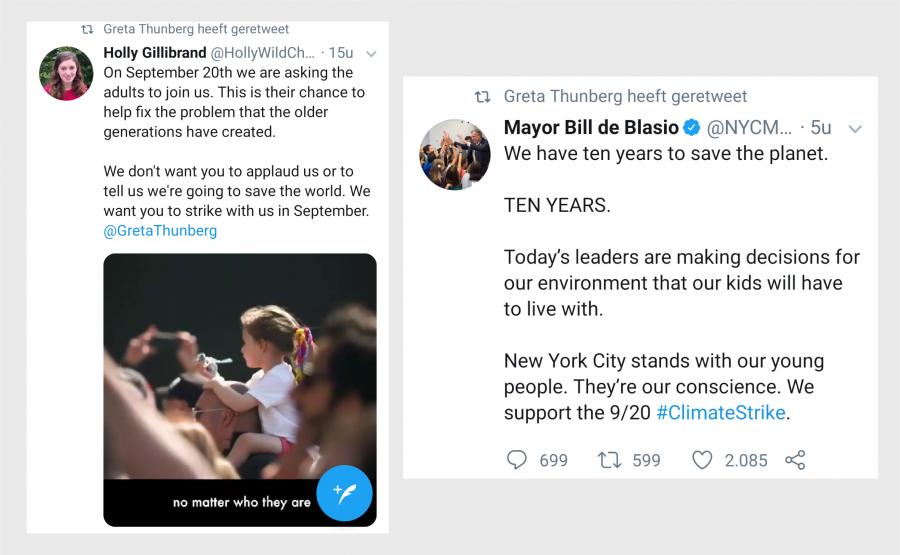
Image 7: Tweet by @HollyWildChild - Image 8: Tweet by @NYCMayor
Furthermore, the few culprit-identifying tweets that come directly from Thunberg generally include quotes from her personal speeches, such as the one to the American Congress in which she said, ''Don’t invite us here to tell us how inspiring we are without doing anything about it. It doesn’t lead to anything,'' and ''you’re not trying hard enough, sorry’.' Other tweets include her strong words to the world leaders present at the UN Climate summit: ''all you can talk about is money and fairy tales of eternal economic growth'' (@CNN). On that same day she and 15 other youth activists ''filed a legal complaint against 5 nations [who] are the largest emitters that have ratified the convention'' (@GretaThunberg), identifying Brazil, France, Argentina, Germany and Turkey as the world’s biggest global greenhouse-gas and carbon emitters.
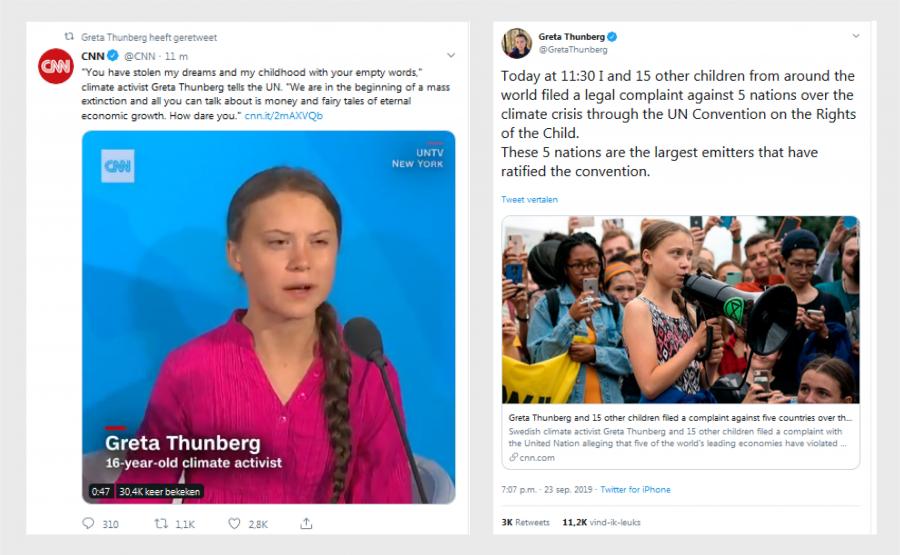
Image 9: Quote from Greta's speech by @CNN - Image 10: Tweet by @GretaThunberg
#climatestrike: A collaborative attempt at saving the future
Scanning Thunberg’s timeline for solutions to the climate crisis resulted in a few individual suggestions, namely to ''make conscious decisions for the environment'' (@UN_Women), ''changing your habits […] reducing your waste and your meat consumption'' (@FffMauritius) and ''Natural climate solutions'' (@GretaThunberg) as suggested by Thunberg in collaboration with fellow climate activist and Guardian journalist George Monbiot.
However, the main action point according to Thunberg, quoting her response to The Daily Show, is ''I think what we should do as individuals is to use the power of democracy to make our voices heard and to make sure the people in power actually cannot continue to ignore us.'' Being an example for others to follow in this narrative of individuals against the climate crisis is in itself a smaller act within the larger climate crisis conversation. Thunberg demonstrates this action point effectively through her climate strikes. Similar to the strikes, Thunberg's battles with the previously mentioned culprits suggest that ultimately the solution lies beyond the individual but also that individuals can have an impact by using their voice.
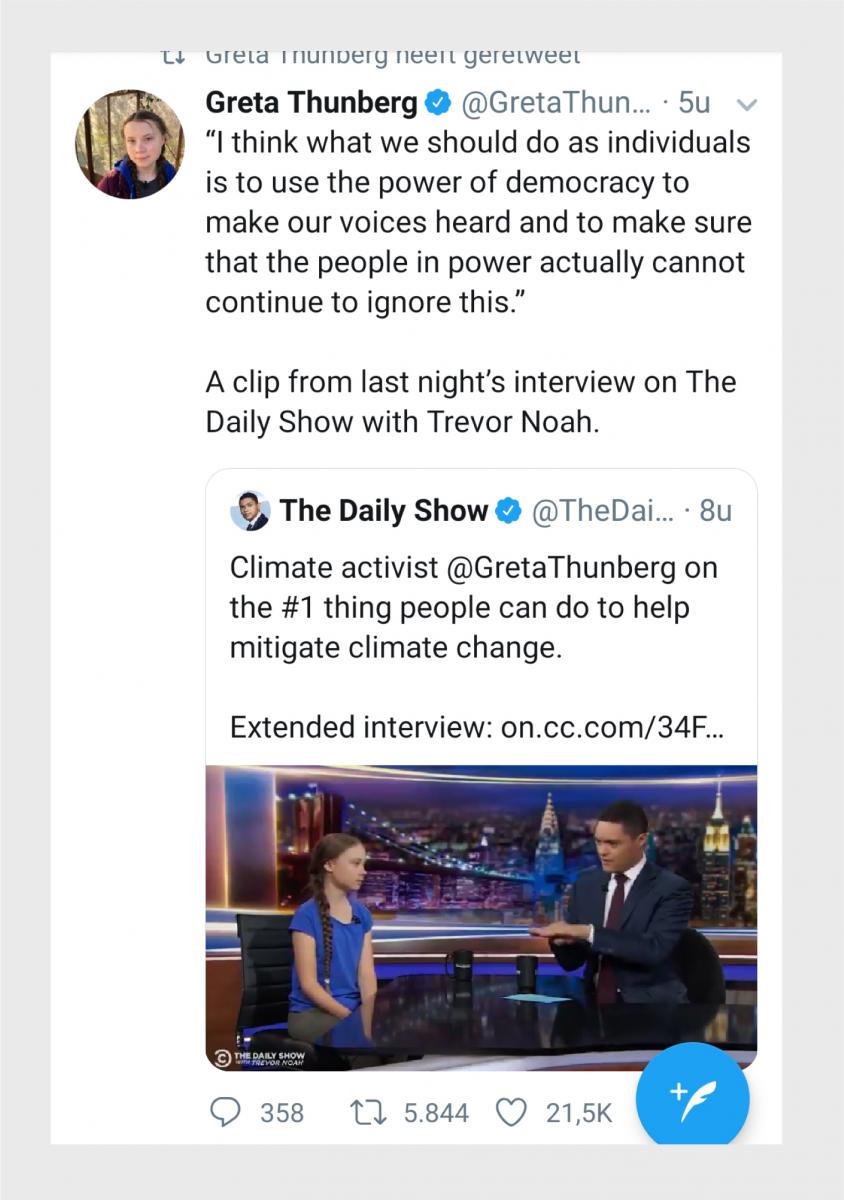
Image 11: @GretaThunberg retweeting with comment on @TheDailyShow
Every Friday Thunberg’s followers can expect a strike-tweet, each including a combination of text and image. The text always states ''School strike week [X]'' and then the location Thunberg is currently striking at. Whereas the text is very brief and informative, the images are more persuasive: each visual shows Thunberg in a central position, either holding or sitting behind the recognisable Skolstrejk för Klimatet sign that she has used since her very first strike. In these images she is surrounded by fellow youth strikers who present pro-climate signs in line with Thunberg’s, confirming them as a part of Thunberg’s movement and narrative. Thunberg's almost identical climate-strike tweets are visual proof of her activism and express her personal mission to keep speaking up until as long as no actual change is enforced, stating in week 55’s strike-tweet: ''I will still demonstrate every Friday wherever I am.''
Further vital multi-purpose elements that are consistently used in the strike-tweets are the hashtags #schoolstrike4climate, which refers to youth skipping school in order to strike, #climatestrike and #fridaysforfuture. These hashtags identify the topic of the tweets and group them to increase their visibility, especially to those who would normally not see such content on their timeline. Perhaps most important is the hashtags' ability to create communities, as those who join Thunberg in striking from any location also join the Twitter-conversation when they use these hashtags.
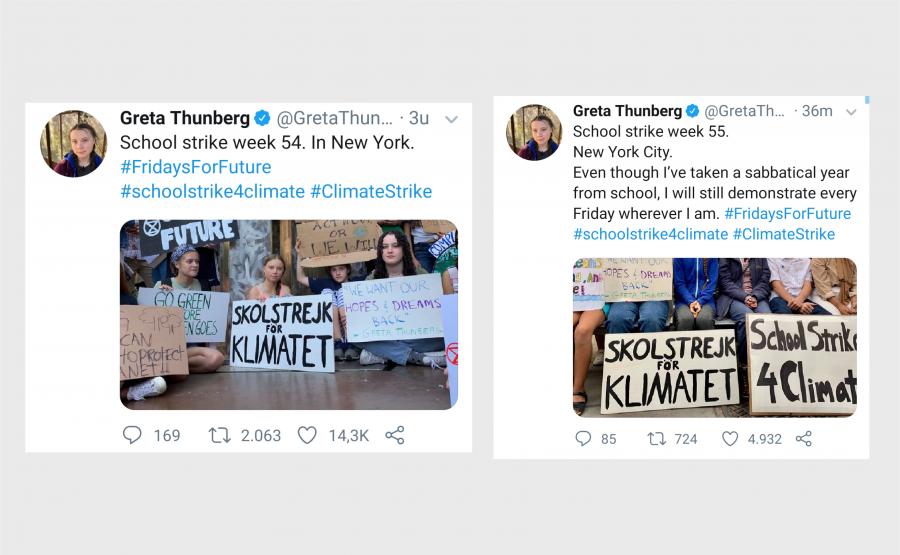
Image 12: tweet by @GretaThunberg - Image 13: Tweet by @GretaThunberg
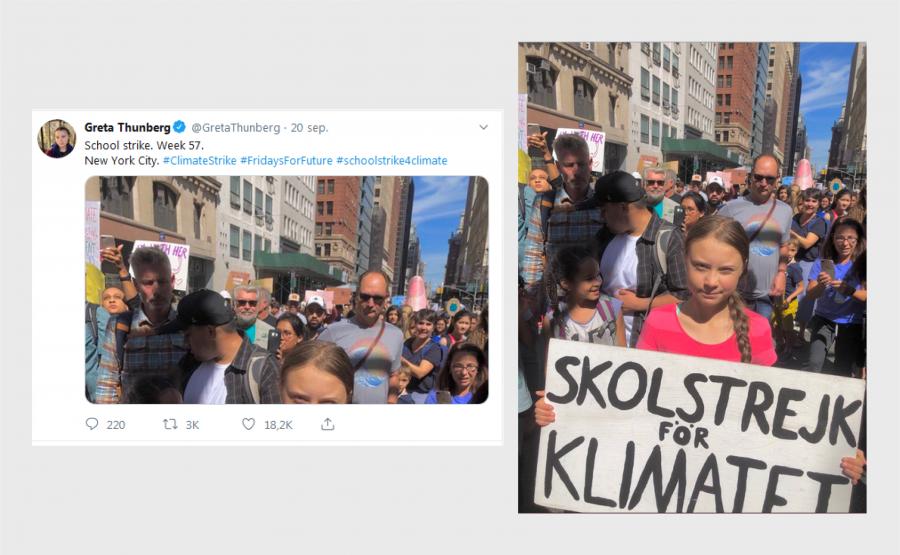
Image 14: Tweet by @GretaThunberg - Image 15: Enlargement of strike-photo
Some strike-tweeters even post tweets that are highly similar to Thunberg’s, using not only the same hashtags, but also including comparable photos with Skolstrejk för Klimatet signs in different languages, the consecutive week, and the location the tweeter is striking at. Thunberg broadly uses the visibility-through-hashtags-affordance, as on strike-days a large part of her tweets are retweets from other global strikers. Through this she shows her followers and other Twitter users the movement and conversation she has unified while also sharing the spotlight with other strikers. The initial tweeters, who made themselves part of Thunberg’s narrative, are then recognised and further included in the larger conversation by Thunberg, who directly copies their activism onto her own timeline.
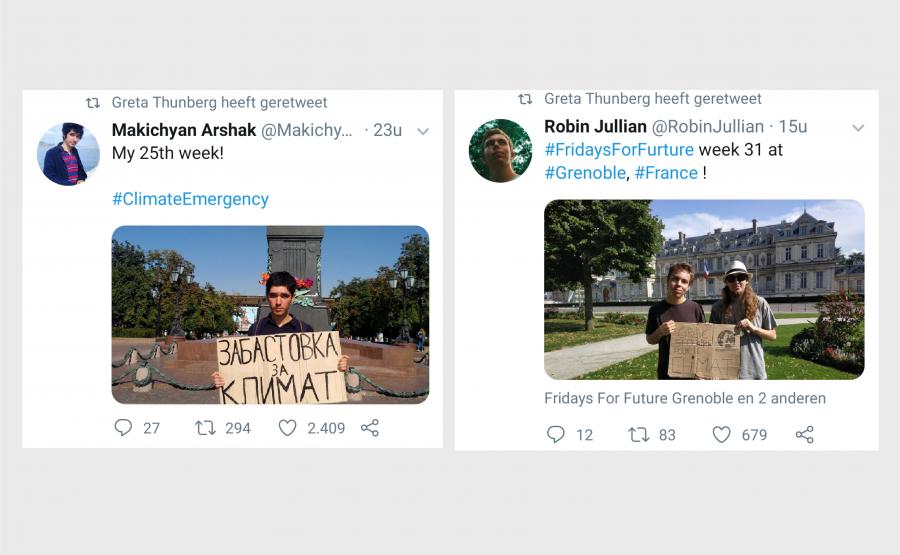
Image 16: Retweet by Thunberg of strike-tweet by @MakichyanA - Image 17: Retweet by Thunberg of strike-tweet by @RobinJullian
This type of climate-strike retweet encourages others to join the conversation or set up their own climate strike. These call-to-action-retweets are most successful when the retweeter has a large network and fills gaps between different communities (Merry, 2014; Boyd, Golder & Lotan, 2010). Thunberg fulfils this role, as she is a connection between the science, new people, strikers, generations, politics, and media. With 2,9 million followers she is in an ideal position to share such content.
'We' need 'you'
As more and more young people join the school strikes and share their similar interests and intentions with Thunberg, they become densely connected nodes within the Twitter network (Murthy, 2013). Heavily referring to that group as ‘we’ and combining this word with calling other groups to action, Thunberg tweets and retweets specific content with the intention of persuading others to join their strikes, be a part of their activism, and speak up ''to disrupt the system.'' Phrases such as ''We need to stand together and support each other and take action'' (@UN) and ''We don’t want you to applaud us or to tell us we’re going to save the world, we want you to strike with us'' (@FffMauritius) appear frequently in anticipation of the climate strikes.
In this specific context, ‘you’ generally refers to adults in pleas such as ''We can’t do it alone […] we need the adults to join us'' (@GretaThunberg) and ''We really really […] really need adults to join us in striking'' (@saoi4climate). These tweets ask for the physical support of adults, and Thunberg implies that older generations tend to think the youth will fix the climate crisis by themselves. A more direct and personal call to action is Thunberg's statement that ''Activism works. So act. See you in the streets!'', with which she addresses every individual. Thunberg opts for specific language to persuade others to join her in her climate activism.
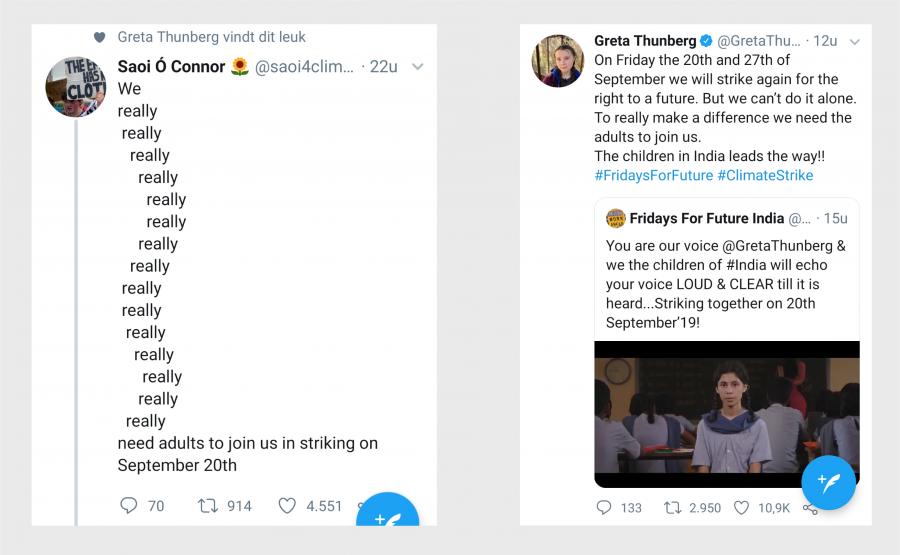
Image 18: Tweet by @saoi4climate - Image 19: Tweet by @GretaThunberg
'We' versus 'you'
In a different yet related context, ‘we’, meaning Thunberg and other young people, is used to indicate how they are a united ‘us’-group in opposition to the ‘them’-group, as clarified by a paraphrase of Thunberg’s Climate Summit speech: ''Activist @GretaThunberg tells world leaders […] young people will never forgive them if they fail to act'' (@BBCWorld).
‘They’ are the previously identified 'culprits', who are also often referred to with the phrase ‘you', as in ''We know you can hear us, when will you listen?'' (@saoi4climate). In her UN Summit speech Thunberg used similar references, stating ''The eyes of all future generations are upon you'' (@BBCWorld) and ''Right here, right now is where we draw the line […] Change is coming, whether you like it or not''. Perhaps the clearest example of the word ‘you’ in this frame is Thunberg’s shaming world leaders, saying, ''How dare you'', and blaming them for having ''stolen my dreams and my childhood with your empty words.'' The phrase soon surged in popularity and became a trending topic under the hashtag #howdareyou, illustrating Twitter's affordance of capturing real-time expressions from users.
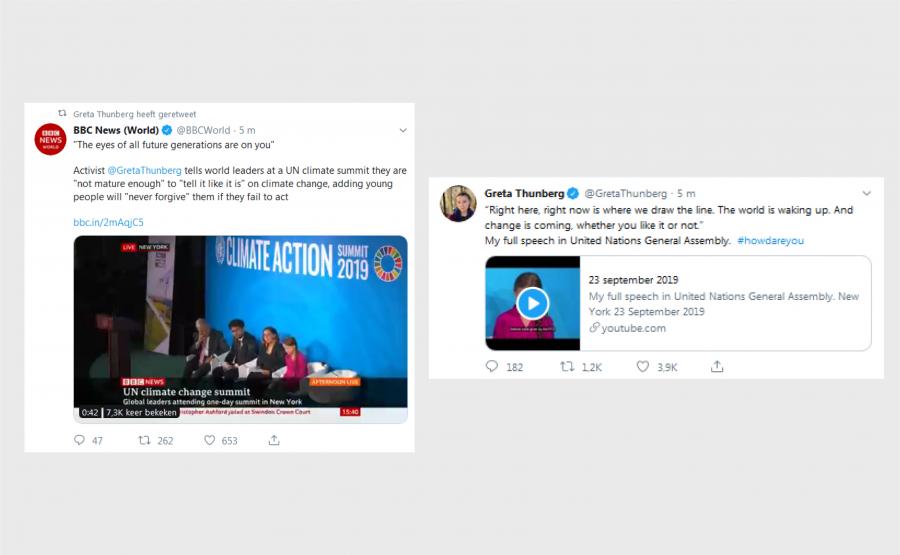
Image 20: @BBCWorld quoting Thunberg - Image 21: @GretaThunberg quoting Thunberg
Continuing the conversation
Thunberg uses the affordances of direct tweets and especially retweets to use data and expressions from fellow Twitter users in constructioning her narrative, which determinedly and consistently frames climate change as a serious crisis for which specific authorities are responsible. These users are generally well-known global organisations or individuals with certain credibility, such as Unicef and the United Nations, but most importantly they share information and views that are in line with Thunberg’s frame and her belief in science and solutions. By retweeting the content of these users Thunberg shows appreciation and adds these institutions into her narrative, which is supported by her personal tweets, and consequently the larger climate crisis conversation.
The affordances of (re)tweets are also used by Thunberg in showing the world her personal activism in the form of climate strikes as well as the efforts of global strikers following in her footsteps as they use shared hashtags such as #climatestrike. Retweeting their strike-tweets also shows Thungberg's appreciation and is an indication of how many people agree with her views and have been included in the conversation. The activist also uses retweets in combination with specific wording to call specific groups and generations to join young people in their climate strikes. Ultimately, with every tweet or retweet, Thunberg expands and impacts the size of the climate activist movement and the global climate conversation.
This analysis focussed on a limited amount of elements within Greta Thunberg’s Twitter actions and emphasizes how everything on her timeline exists in the tiny and easily re-usable context of a tweet. It revealed how she copies tweets without changing their meaning, as the content shared by the activist is in line with and supports the specific discourse she has adopted within the climate crisis context. However, there are of course many more examples to be found and many more topics and perspectives to be explored. For example, revealing the ways that indirect actions affect Thunberg, that is, the way other users, perhaps climate-deniers, use her name in their tweets and how they interpret her narrative. Also, more data and details can found beyond Twitter, within the hyperlinks and videos that are shared by Thunberg and by others within the climate activist movement.
References
boyd, D., Golder, S., & Lotan, G. (2010). Tweet, Tweet, Retweet: Conversational Aspects of Retweeting on Twitter. 43rd Hawaii International Conference on System Science.
Bucher, T., & Helmond, A. (2018). The Affordances of Social Media Platforms. In J. Burgess, A. Marwick, & T. Poell (Eds.), The SAGE Handbook of Social Media (pp. 233–253). Sage Publications.
Burghardt, M. (2015). Introduction to Tools and Methods for the Analysis of Twitter Data. 10plus1 Journal: Living Linguistic, 74–91.
Diggit Magazine. (2019). Intertextuality. Wiki.
Diggit Magazine. (2019). Digital ethnography. Wiki.
Leppänen, S., Kytölä, S., Jousmäki, H., Peuronen, S. & Westinen, E. (2013). Entextualization and resemiotization as resources for (dis)identification in social media. Tilburg Papers in Culture Studies, 57.
Merry, M.K. (2014). Broadcast Versus Interaction: Environmental Groups’ Use of Twitter. Journal of Information Technology & Politics, 11(3), 329-344.
Murthy, D. (2013). Twitter: Social Communication in the Twitter Age. Wiley.